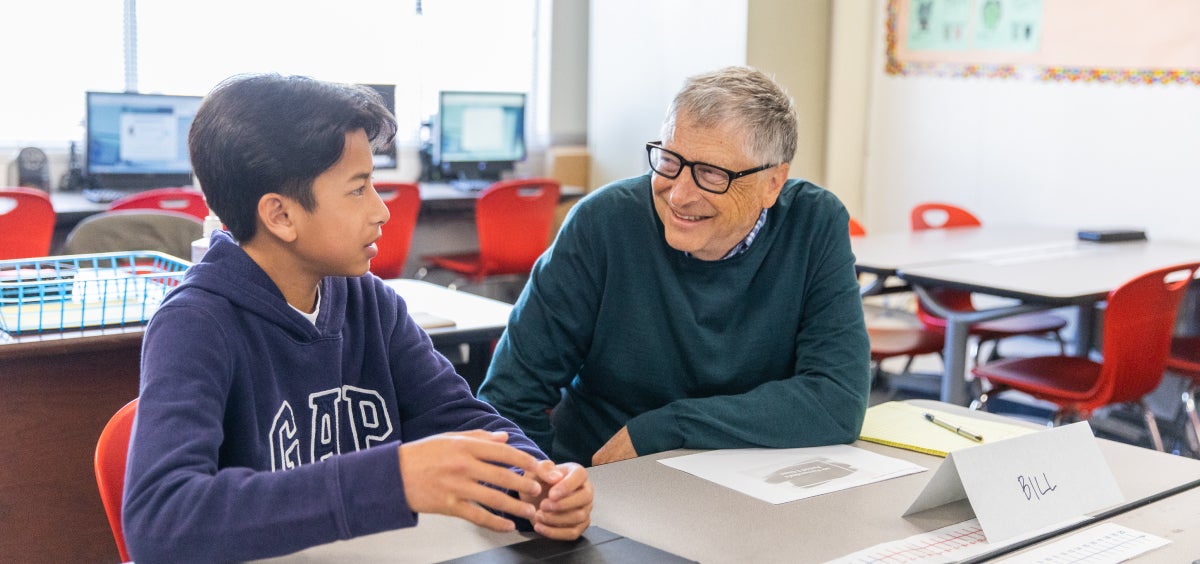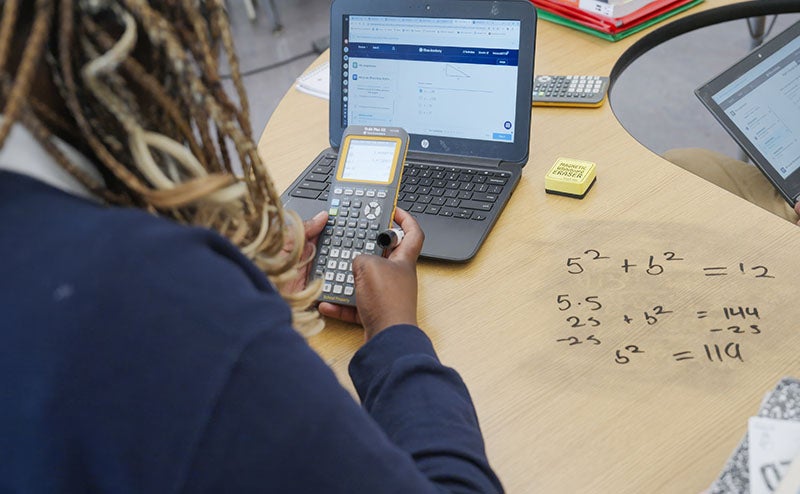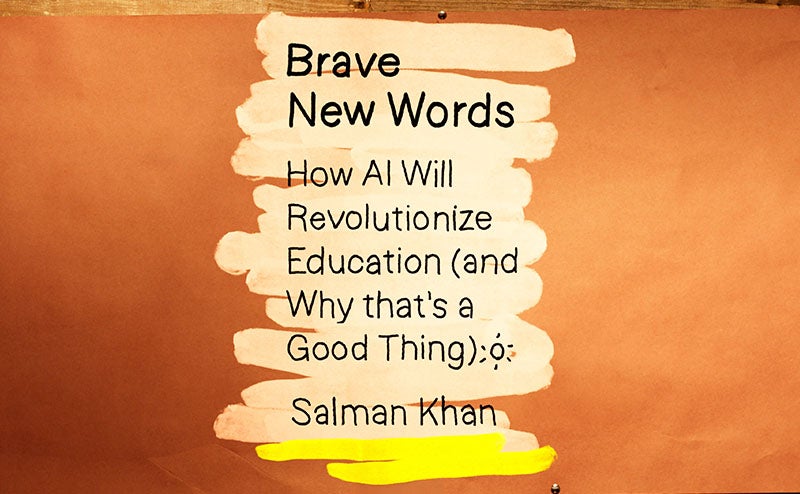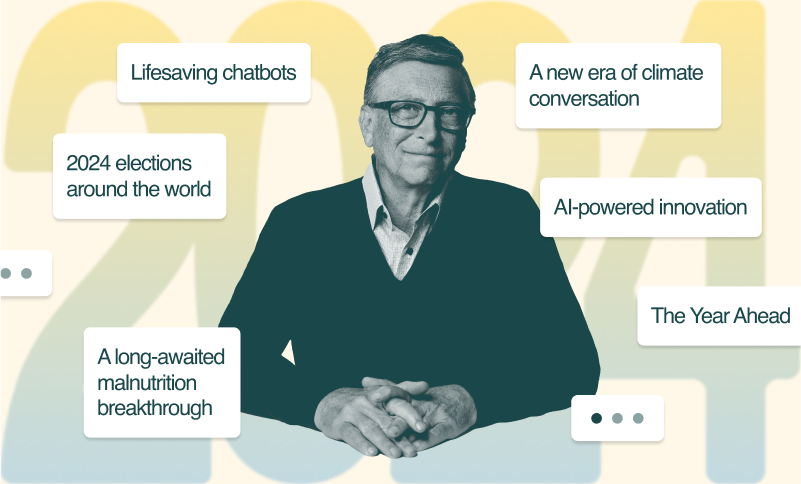No one understands where education is headed better than Sal Khan, and I can't recommend Brave New Words enough.
Do you know how to calculate the volume of a prism? What about a pyramid? And what does either have to do with movie theater popcorn?
Back in April, I spent the day at Chula Vista Middle School in Southern California learning what these questions have to do with graduating from college. I was there to meet with school and district leaders and join an eighth-grade math class taught by a remarkable teacher named Amilcar Fernandez, who also runs the math department and develops its curriculum. Over the past few years, Mr. Fernandez has been trying to transform how Chula Vista teaches what is widely cited as American students’ “least favorite subject”—and has been since at least the year I was born.
While my love of math is no secret, I know many people don’t feel similarly. To them, the subject often feels abstract, even irrelevant. And with the rise of calculators, then computers, and now AI chatbots, it’s getting harder and harder to explain to students why they should learn how to do long division or find the area of a trapezoid by hand.
The truth is that math is more than just a bunch of numbers—much more. Not only are math skills relevant to our everyday lives in ways we might not realize, they’re also a powerful indicator of how successful those lives will be. As I’ve written in the past, research shows that students who pass Algebra 1 by ninth grade are more likely to earn a bachelor’s degree (in any major) and go on to a well-paid career. If they fail the course, they only have a one-in-five chance of graduating from high school.
So it’s critical that students build the foundation in math they need to take on that tough course, which is the most frequently failed high school course in the country. But so many don’t. Earlier this year, the National Assessment Governing Board released its Long-Term Trend Report, which showed that math scores for 13-year-old students in seventh and eighth grade fell nine points compared to 2020 and 14 points compared to a decade ago—dropping to levels not seen since the 1990s.
But even prior to the pandemic, students were struggling. In 2019, the last year of data we have before it upended education around the world, just 34 percent of U.S. eighth graders were proficient in math. For too many, the subject is a barrier to success instead of a gateway.
That’s not because students can’t keep up with what is being taught in math class; it’s because what is being taught in math class hasn’t kept up with them. Over the past several decades, the way that algebra, geometry, and calculus are taught has barely changed—despite tremendous transformation in the labor market, and despite polling that shows parents and teachers believe math education should be more applicable to the real world (and evidence that suggests students’ engagement and understanding in math increase when it is).
That is why the Gates Foundation’s K-12 education strategy is focused on improving student outcomes by modernizing math education. To us, that means three things. First, it should be personalized to students and their respective interests, abilities, needs, and goals, with feedback tailored to them and opportunities to work on some topics or problems of their choosing. Second, it should prioritize interaction and communication by encouraging students to talk through their problem-solving approaches out loud and collaborate to find the answers, which can build their confidence and allow them to learn from each other. Third, it should be applicable (and applied) to complex, real-world problems that students know exist outside the classroom—from designing a budget to estimating population growth.
I got to see these three key concepts in action during the day I spent in Chula Vista. The school is part of one of the foundation’s two Networks for School Improvement run by the High Tech High Graduate School of Education. They’re focused on helping more eighth graders get on track by supporting teachers like Mr. Fernandez as they work to improve the way math, specifically, is taught and learned—and how students are engaged in the process.
The lesson for the day was one that most middle-schoolers learn at some point: how to calculate the volume of a pyramid. But Mr. Fernandez’s approach to teaching it was different. Rather than give students the formula and have them practice it over and over again, he put the pyramid in their hands—literally, with a pyramid-shaped popcorn container—and asked them to take the lead in their own learning. The question he asked to start the lesson off wasn’t “What is the volume?” but “Which of these two popcorn containers—one a rectangular prism, and one a pyramid—would you buy at the movie theater to get the best deal?”
By approaching the lesson this way, Mr. Fernandez gave his students a real-world application that they’ve likely already encountered—and an incentive to learn the answer. After all, who doesn’t want to get the most bang for their buck? Then he had his students talk through what they already knew about volume, and about how the area of four-sided 2D shapes relates to the area of three-sided ones.
I loved watching the students answer each other’s questions, and I was impressed by how Mr. Fernandez empowered all of them to speak up. As he explained to me afterward, one of the reasons he’s able to do that is because of the feedback he receives and then implements from frequent student surveys. While he certainly wants and solicits student input on his performance as a teacher, the specific surveys he gives do more than that: They also measure engagement and relevance by allowing students to give feedback on how they are experiencing the classroom.
Studies have shown that students are more than twice as likely to earn As and Bs in math when they rate classroom learning conditions highly, which happens when they feel a sense of agency and belonging there. Mr. Fernandez knows firsthand how critical those factors are. Chula Vista is under ten miles from the border with Mexico, and most of his students are either the children of immigrants or immigrants themselves. Fernandez is a first-generation American, too. From the surveys, he knows that many of his students bring that part of their identity into the classroom—either insecure about English as a second language, or unsure about college because no one in their family has gone, or simply unconvinced that math is relevant to their lives in the grand scheme of things.
But because Mr. Fernandez understands and relates to his students’ experiences, he can make them feel seen, and like they belong, in the classroom. That, coupled with his applications of math to real-world contexts that pique his students' interest, ends up increasing their engagement. At Chula Vista, math proficiency rates have increased 18 percentage points in the last three years—a sign that these efforts are making an impact.
Sometimes, the math problem in this country feels impossible to solve. But when more teachers have the tools they need to reach their students—and teach math in a way that resonates—I’m confident that more of their students will graduate with a love of math just like mine.




